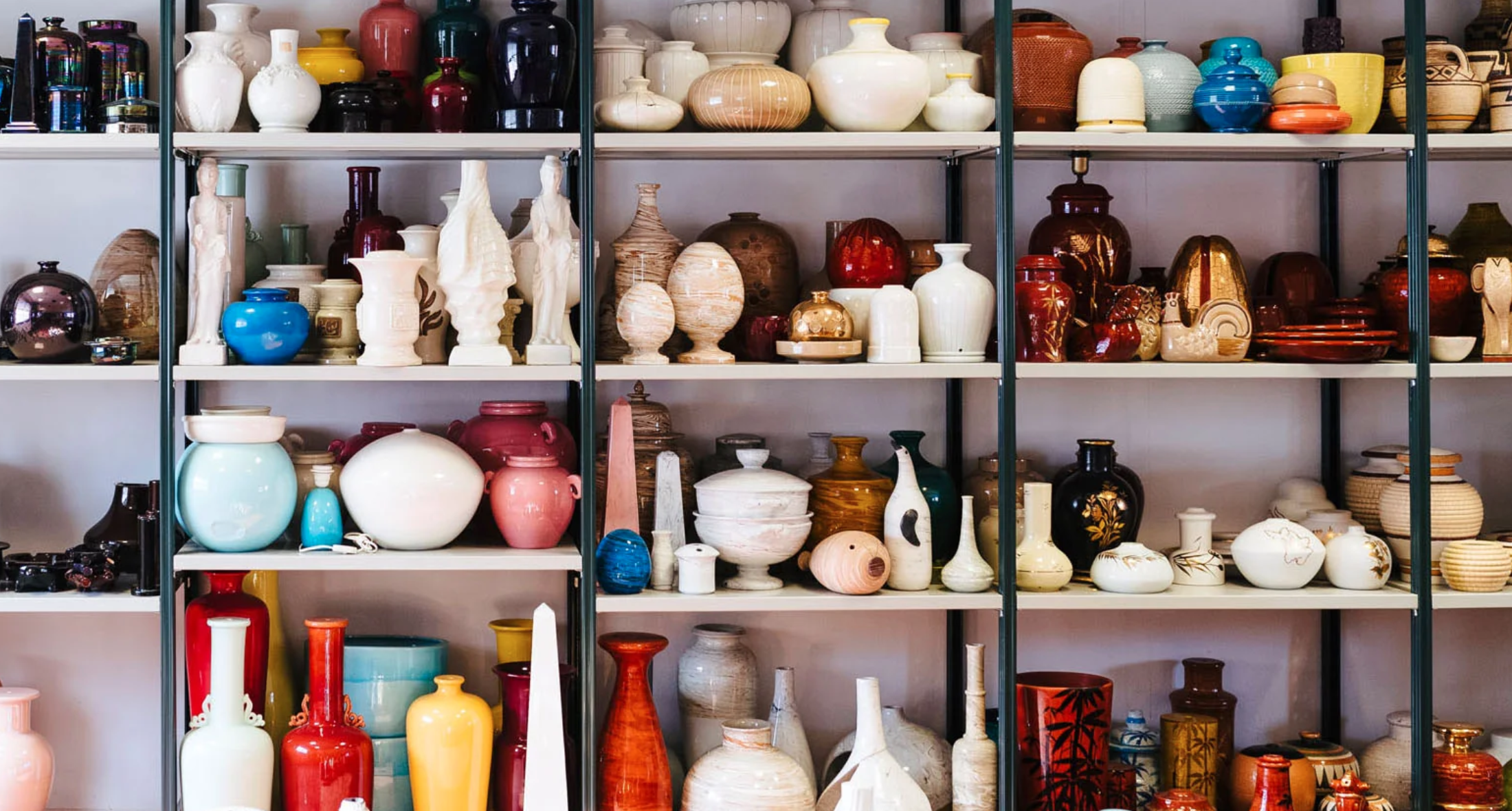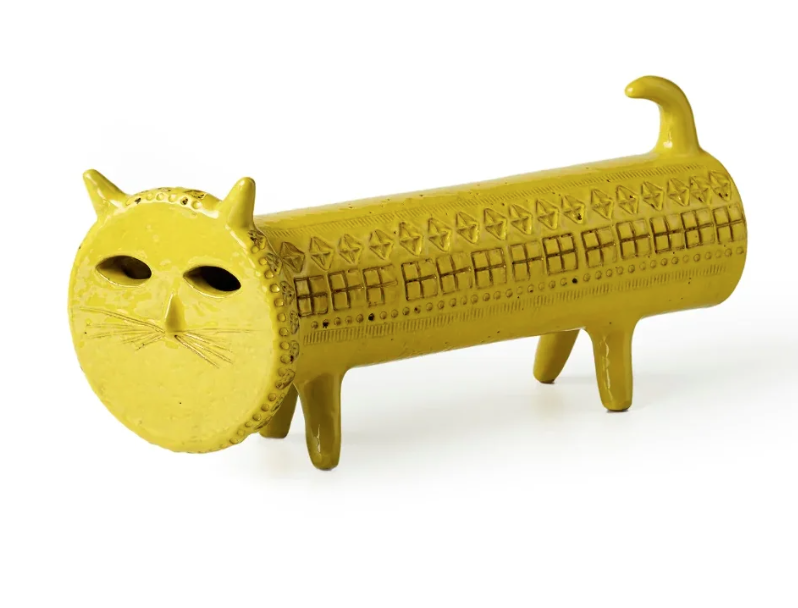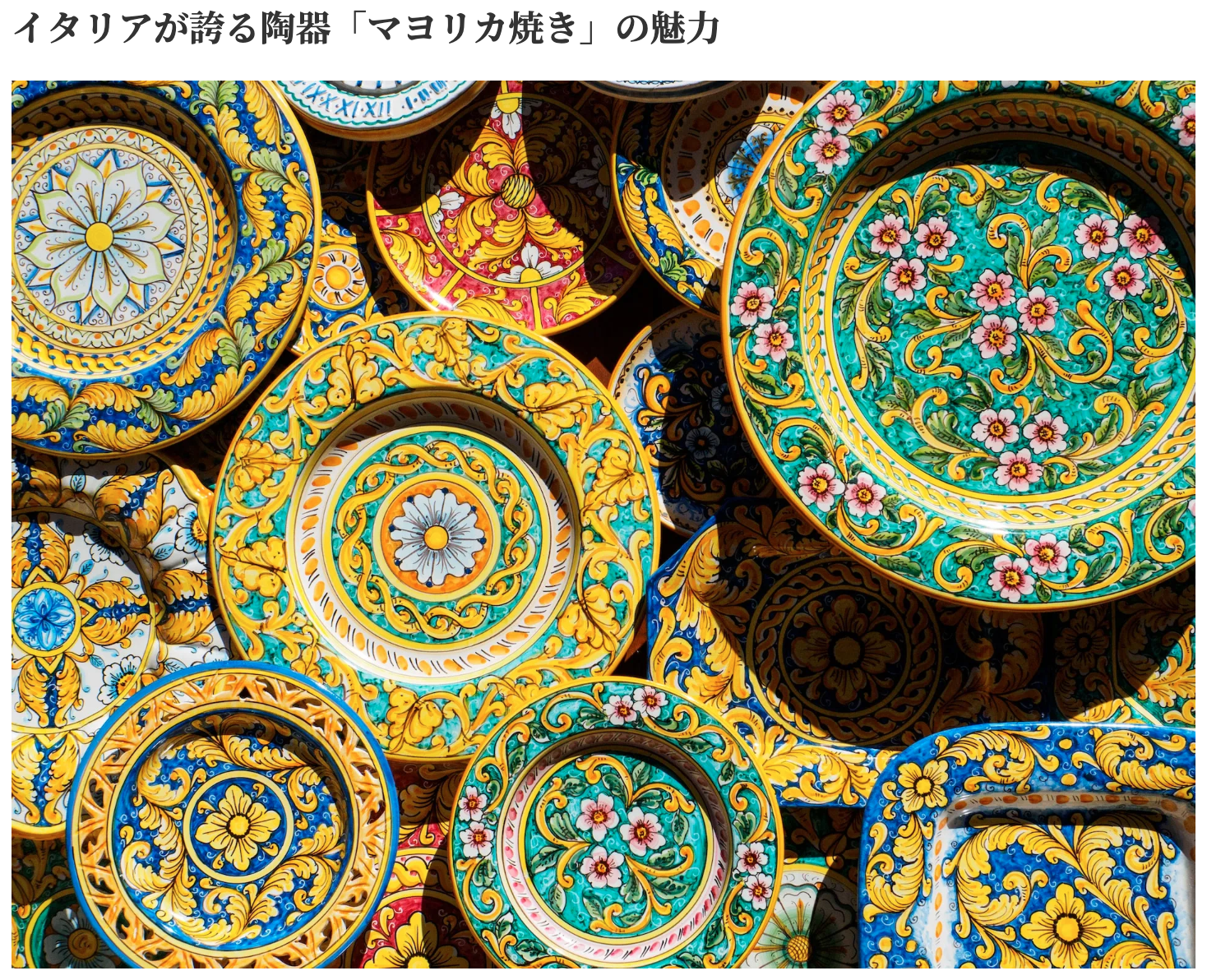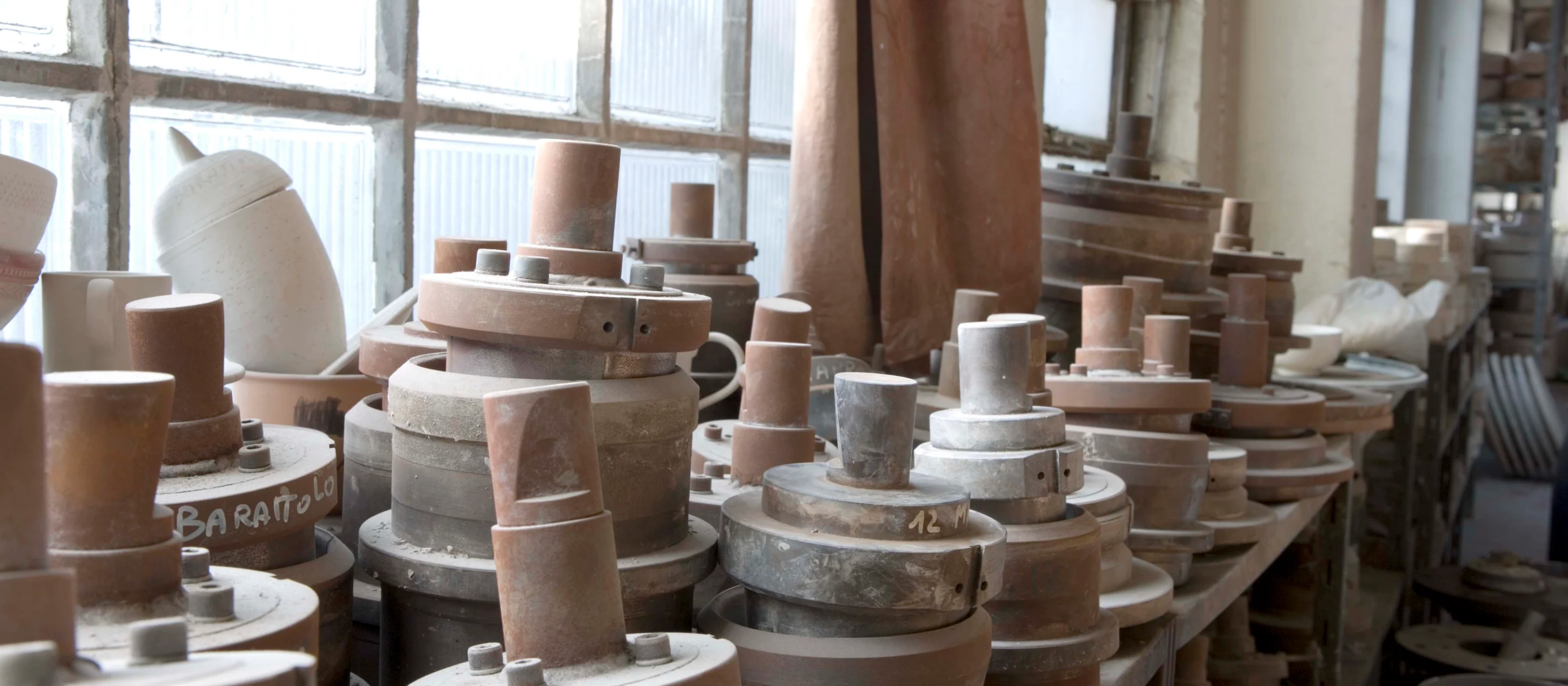Online shopping site for Italian products selected by Italians
Shopping guide
For Italian products, enter italiadesign
japan
Online shopping site for Italian products selected by Italians
Shopping guide
For Italian products, enter italiadesign
japan

ITALIA DESIGN BLOG
2023.12.18 [mon]

Speaking of Italian pottery, it is majolica pottery with colorful pictures.
At tourist spots, colorfully painted plates and vases line the storefronts.
You can also see many pieces displayed in art galleries and museums.
The bright color combinations and designs remind us of the cheerfulness of Italy and a slice of life in the past.
There is a kiln in Tuscany, Italy that produces majolica, which spread throughout Europe during the medieval period.
Table of Contents for this article: Click to go
1. How a long-established pottery became Italy’s leading pottery
2. tuscany and majolica
3. Bitossi family archive
4. unique collections
◆ Rimini blu by Aldo Londi
◆ Formafantasma Clay
◆ Symbolik by Karim Rashid
◆ Revolver by Christoph Radl
5. in conclusion
We still produce made-in-Italy pottery.Bitossi Ceramiche〈Bitossi Ceramiche〉Records of this date back to the 1500s.
フィレンツェからほど近い、Montelupo FiorentinoThe Bitossi family, who were active as pottery makers, sculptors, and painters, focused on integrated production of ceramics and solidified the foundation of ceramic production in Italy.
In 1921, Mr. Guido Bitossi founded the Guido Bitossi Artistic Majorica Factory in Montelupo to further pursue research and production of ceramics.

There are two key players behind making this possible.
Supporting Bitossi for over 50 years,アルAldo Rondi。
After joining Bitossi in 1946, he has been active since the 1950s, researching modern and original works, and later breathing new life into Bitossi’s ceramic production as an art director.
Riedizioniのコレクションis a reprint of Mr. Aldo’s iconic works from the 1950s to the 1970s, and is still loved as one of Bitossi’s representative collections.

Italian architect and designerEttore Sottsass。
Joined the Bitossi factory in 1955 and focused on producing new ceramics. His collection is said to have opened a new era in Italian design history.
During his lifetime, he also worked on typewriters, furniture, and home design, and his works are Some of them are in the collection of the Museum of Modern Art in New York.

At Bitossi, he left behind a number of works that are full of his charm as a designer, such as works using unusual glazes such as black and blue, and works with enamel finishes. Many of the designs we currently produce are also his work.
In 2014, Bitossi Ceramiche published the `The company was registered with the Registro di Imprese Storiche Italiane (Historical Companies in Italy) as a company that has been producing tableware and ceramics for at least five generations.
Bitossi Ceramiche, which is still located in the original factory, continues to cultivate the next generation and create collections with young designers while preserving its traditions and techniques.Today, it continues to be a leading Italian ceramic brand around the world. Loved by.
The origins of maiolica baking in Tuscany date back to the 13th century.
Montelupo, located a few kilometers from Florence, where the production of pottery was popular, was the center of maiolica production between 1400 and 1530.
Many Florentine aristocrats placed orders directly with potteries or received maiolica ware made in Montelupo as gifts.
At that time, there were many kilns producing pottery for export, and it is said that in the 15th century, craftsmen from Montelupo gained strength and spread throughout Italy.


To begin with, majolica is a type of Italian pottery that originated during the Renaissance period and is characterized by its bright colors and uses tin glaze.
Majorica is currentlyMallorca IslandThe name comes from the fact that it was a relay point for exporting pottery from the Valencia region of Spain to Italy in the medieval period. It is said that
The 16th century is said to be the golden age of maiolica in Europe, and you can still often see it in museums and art galleries across Europe.
Past articles about majolica baking“The charm of Italy’s proud pottery “Majolica””.

Bitossi Ceramiche provides a place where the historical archives of Montelupo, the birthplace of majolica, can be accessed even today.
Please come and visit us when you visit Tuscany.
The Bitossi Archive Museum, which opened in 2021 to commemorate its 100th anniversary, houses more than 7,000 items, including ceramics collections, plaster models, and work tools. Overwhelming.
Managed by Colorobbia Group, founded by the Bitossi family Centro Ceramico Sperimentale for the training of professionals involved in ceramic production. Ceramic Center built in 2016.
The technical college trains craftsmen, researches raw materials such as glazes and clay, and preserves historical techniques and materials. It has become a place of learning for many people.

We would like to introduce you to a fascinating collection of unique designers and traditions and techniques that have been passed down for centuries.
Why not take a look at the history and modernity of Italian pottery through Bitossi Ceramiche?
*Click on each product image to go to the product page*
The brand’s representative collection has been produced continuously since 1959.
It is characterized by a detailed design that combines geometric patterns and circles, a bright blue glaze, and a color that changes depending on the light after firing. Of course, there are also various animal motifs.

The Phantasma Collection focuses on materials
By tearing the formed pieces by hand by craftsmen, it is possible to create a one-of-a-kind jagged edge. A modern collection that approaches the vivid expressive power of pottery.

Collection with Karim Rashid, released in 2006
This collection is modern and unique, with blocks of various shapes and a colorful color palette. The white viscosity is covered with enamel, giving it an irresistible texture that doesn’t even look like porcelain.

Collection by graphic designer Ladol
Characterized by warm color combinations and graphic designs.

What do you think of Bitossi Ceramiche, a place representing Italy where history and modernity intersect?
It’s also fashionable to incorporate Italian pop colors into your living room or study as an accent color.
This site also has other Bitossi Ceramiche products.
Please take a look and contact us.
Click here for a list of Bitossi Ceramiche’s products Click here
〈参考〉
Fondazione Vittoriano Bitossi ホームページ
Union Camere : Bitossi Ceramiche srl
〈Please also read this article〉
☆ Italian year-end and New Year holidays
☆ Progetti – Italian design that adds moisture to your daily life -< /a>
☆[Improving work efficiency] Learn how to work from Italians